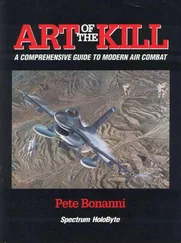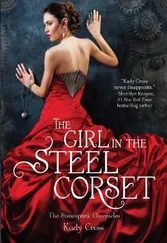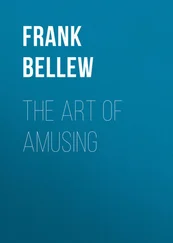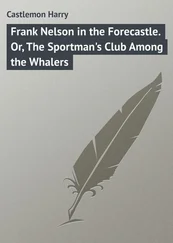Frank Abagnale - The Art of the Steal
Здесь есть возможность читать онлайн «Frank Abagnale - The Art of the Steal» весь текст электронной книги совершенно бесплатно (целиком полную версию без сокращений). В некоторых случаях можно слушать аудио, скачать через торрент в формате fb2 и присутствует краткое содержание. Год выпуска: 2001, ISBN: 2001, Издательство: Broadway Books, Жанр: Старинная литература, на английском языке. Описание произведения, (предисловие) а так же отзывы посетителей доступны на портале библиотеки ЛибКат.
- Название:The Art of the Steal
- Автор:
- Издательство:Broadway Books
- Жанр:
- Год:2001
- ISBN:9780767910910
- Рейтинг книги:4 / 5. Голосов: 1
-
Избранное:Добавить в избранное
- Отзывы:
-
Ваша оценка:
- 80
- 1
- 2
- 3
- 4
- 5
The Art of the Steal: краткое содержание, описание и аннотация
Предлагаем к чтению аннотацию, описание, краткое содержание или предисловие (зависит от того, что написал сам автор книги «The Art of the Steal»). Если вы не нашли необходимую информацию о книге — напишите в комментариях, мы постараемся отыскать её.
The Art of the Steal — читать онлайн бесплатно полную книгу (весь текст) целиком
Ниже представлен текст книги, разбитый по страницам. Система сохранения места последней прочитанной страницы, позволяет с удобством читать онлайн бесплатно книгу «The Art of the Steal», без необходимости каждый раз заново искать на чём Вы остановились. Поставьте закладку, и сможете в любой момент перейти на страницу, на которой закончили чтение.
Интервал:
Закладка:
I take the check and dry it with a blow-dryer. I remove the Scotch tape which prevented the acetone from getting into the controller’s signature. What’s left is a nice dry blank check signed by the controller of a Fortune 500 company. I call the bank that the check is drawn on, and ask, “Would this account clear a check for twenty-thousand dollars?” “Oh, sure, the funds are available,” I’m told. I stick the check in the typewriter, fill it out for twenty-thousand dollars, go down to the bank, they check the signature, and they give me the money.
A couple of years ago, four thieves cruised around the more prosperous neighborhoods in South Bend, Ind., as well as communities just over the border in Michigan, looking for mailboxes that had their flags up. The guy riding in the passenger seat opened the boxes and sifted through the outgoing mail. When he found someone who had paid their telephone bill or electric bill, he removed those checks from their envelopes and took them. The thieves washed them in nail polish remover, blow-dried them, filled in new names and much higher amounts, and cashed them at local banks. This mailbox caper goes on every day all over the country, usually near the last day of the month when the odds are best of finding checks. Since people generally leave outgoing mail in their mailbox before heading to work, criminals will steal checks in the morning, wash them, and cash them by the afternoon. A lot of the check washers are drug addicts. The same chemicals that they use to cook their drugs, they use to wash checks.
HOW BUYING TIME BUYS YOU MONEY
Often a forger needs to buy time to get away with passing fraudulent checks, and so he resorts to some other little modifications. First of all, every good forger alters the numbers along the bottom of the check. Inside a set of brackets is a nine-digit number. That’s the bank’s routing number, and it’s like a zip code. When you cash the check, that number allows the check to be sent back to the bank where your account is. The first two digits of that number signify the Federal Reserve Bank in your jurisdiction. For example, New York would be 02. There are twelve federal reserve banks scattered around the country; like a dozen eggs, there are a dozen banks. The numbers are assigned from east to west: for instance, 01 is Boston, 03 is Philadelphia, 08 is St. Louis, and 11 is Dallas.

Let’s say you have a company check from a bank in New York and the company is in New York. You can color-copy fifty of them. That’s quite simple. But if you start cashing them today at supermarkets in the New York area, by tomorrow the bank knows about it and the company will complain that these are forged checks. They call the police, and they send out a bulletin that you’re out there passing bad checks. How many places could you get to in a day? Ten? If you got on the New Jersey Turnpike with all its traffic, you wouldn’t get to the next exit.
But what if I drop the “0” and replace it with a “1”? When I cash the check, the clerk at the courtesy booth at the supermarket will look at the name of the bank and recognize that it’s a New York bank, so it’s a local check and he has no problem cashing it. But when the store deposits the check, by changing that number, just as if I had altered a zip code, I force that check to go all the way across the country to Hawaii to clear. When it gets to Hawaii, someone notices that the routing number is incorrect and puts a white strip called a Lundy strip across the bottom of the check over the old routing number and sends it back. But by the time that happens, two weeks will have passed. So I have fourteen days instead of one day to wander all over New York cashing bad checks. Forgers live on the theory that stall creates float and float equals profit.
WHAT TO DO
I always train people to know their Federal Reserve code numbers. If a teller in New York sees a New York check, that should have 02. If she sees 12, that tells her she’s looking at a forged check.
Any government check always has as its routing number, “000000518.” Forgers who forge government checks remove the first three zeroes and encode the check with the code of a bank in another state. That way the computer treats the check as an ordinary business check, and routes it to a destination other than the U.S. Treasury.
IN ADDITION, BE SUSPICIOUS IF . . .
Most forged checks don’t have perforated edges. Real checks do. The only exception to this rule are United States Government Treasury checks. Forgers could create checks with perforated edges, but few bother as it’s expensive. When forgers buy check paper, they usually buy standard 81⁄2 x 11 sheets. They print out three checks on a sheet of paper and then cut them apart. When you’re handed one of their checks, there is no perforated edge anywhere on the check. It’s smooth on all four sides. That’s usually a dead giveaway that it’s a forgery.
Most forgers don’t use magnetic ink to do the routing numbers. It’s not because they aren’t able to. Anyone can go into an office supplies or computer store, and buy a magnetic ink cartridge for their printer. Forgers don’t do it because of the float. Meaning, if I put magnetic ink on the check and cashed it at a grocery store, the bank computers would read it overnight and reject it. But if I use regular blank ink, the computer in the clearing house can’t read it. The next day, the check will have a Lundy strip put over the routing number. They’ll reencode it with magnetic ink, but they’ll still use the routing number that I put on the check. It’ll still go to Hawaii, but now I’ve bought two more days. If you’re passing six- hundred-dollar checks and you’re doing ten a day, that’s twelve thousand dollars more profit.
DON’T KEEP IT SIMPLE, STUPID
One of the main reasons forgers are so successful today is because we give away so much information. Businesses commonly establish an M.D.A., or maximum dollar allowed amount, for their checks. That puts a cap on the amount a check can be written for. A company, for instance, might set up its checking account with instructions that checks are not to exceed $1,500. The bank will lock that into their software, and if a check comes in for $1,500.01, it will reject it. It’s a great feature, except many companies print those instructions right on every check: “Not valid over $1,500.” That tells every forger, if you’re going to forge this check, you better stay under $1,500. Why are you telling the forger how to defraud you?
Or a forger will pick up a check that says right on the face, “Two signatures required on checks over ten thousand dollars.” He’ll simply make sure he puts a second forged signature on the check.
Here’s another way that companies unwittingly assist criminals in robbing them. If you look at the annual report of any Fortune 500 company, on page two or three is the signature of the chairman of the board, the chief financial officer, the treasurer, the controller, all in camera-ready art. That’s where most forgers get their signatures for fraudulent checks, straight out of annual reports. A forger digitizes that signature, puts it on a check or letter of credit, and he’s in business. Your business.
When you prepare an annual report, put in a picture of the officer, put in the name of the officer, and put in the title of the officer. But don’t put in the signature. If you feel some obligation to show a signature, have an artist do a rendition of it rather than the true signature. If you do include the real signature, that signature is going to show up on a check that you won’t be happy paying.
Читать дальшеИнтервал:
Закладка:
Похожие книги на «The Art of the Steal»
Представляем Вашему вниманию похожие книги на «The Art of the Steal» списком для выбора. Мы отобрали схожую по названию и смыслу литературу в надежде предоставить читателям больше вариантов отыскать новые, интересные, ещё непрочитанные произведения.
Обсуждение, отзывы о книге «The Art of the Steal» и просто собственные мнения читателей. Оставьте ваши комментарии, напишите, что Вы думаете о произведении, его смысле или главных героях. Укажите что конкретно понравилось, а что нет, и почему Вы так считаете.












